Description
Gopalpur village is famous for producing Tussar fabrics. It is in Jajpur District in the Indian state of Odisha. This handicraft received the Geographical Indication tag by the Government of India in 2009. Tussar textiles are related to dhoti, joda, Shawl stole, scarves and saris.
Thread
Females usually assist in reeling the tussar threads holding ‘natai’ in their right hand and unwinding the thread around the cocoon with their other hand. Twisting the filament, the weaver winds the yarns on the wooden ‘natai’ at a continuous speed. Embellishments are done by hand, either with extra weft or extra warp with a ‘bandha’ pattern in hand. The embellishments increase the value of the fabric. Alternatively, reeling machines are available.
Spinning
Traditionally, thread is wound around the chadaki to fill the bobins (nali) for weft with the help of a spinning wheel (charakha). Gandhi charakha or wooden charakha have been replaced by a metal part.
Weaving
Fabric is woven using a ‘cut shuttle technique’, in which shuttles interlock with one another to form foda kumbha in the weft direction. Shuttles on both sides interlock with the main shuttle for the main body of the fabric. By tie and die bandha technique, the foda kumbha pattern is copied for multiple productions.
Design
Threads are dyed in different shades, such as maroon, red, plum and rust. Fabrics are designed in tussar and gheecha and enhanced with a weft and cut shuttle technique.

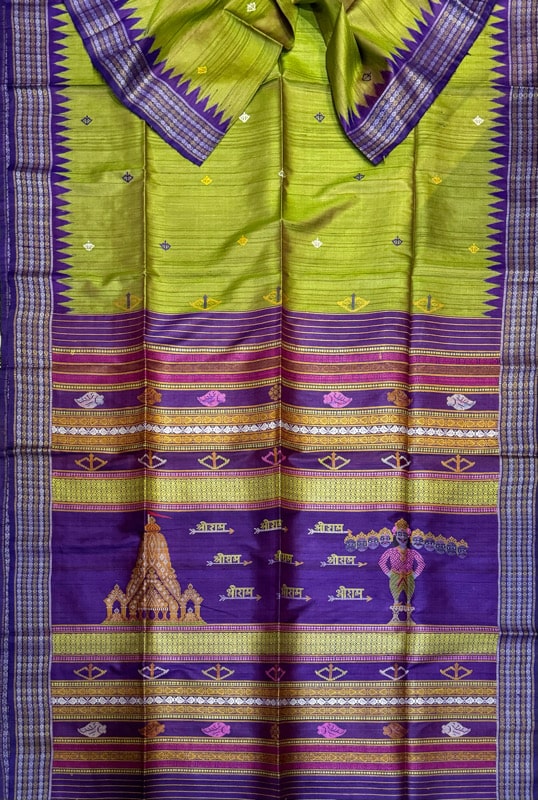
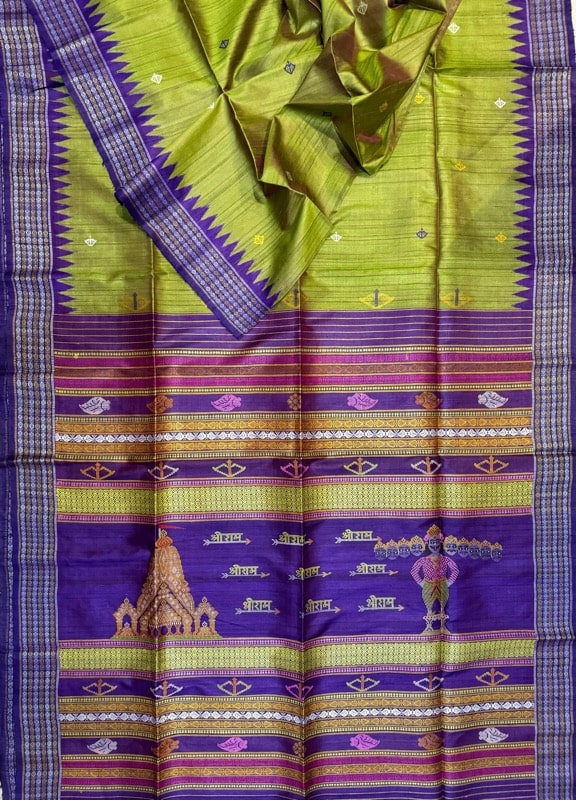
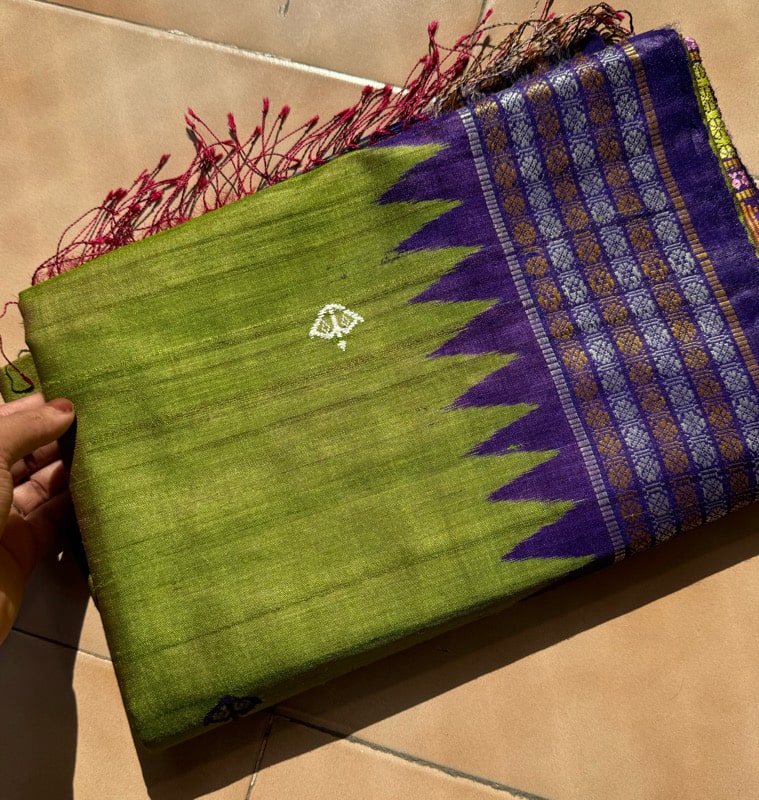
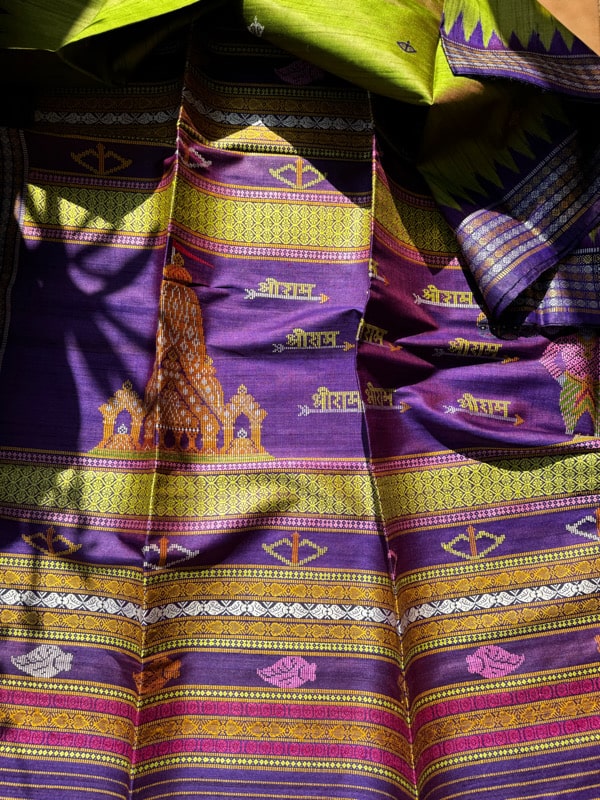
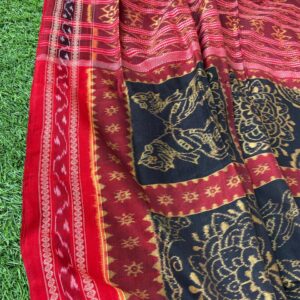
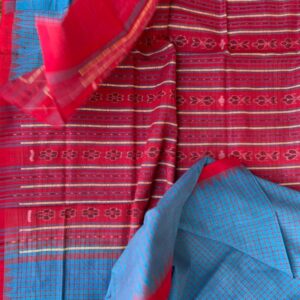
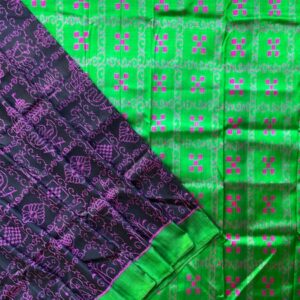

Reviews
There are no reviews yet.